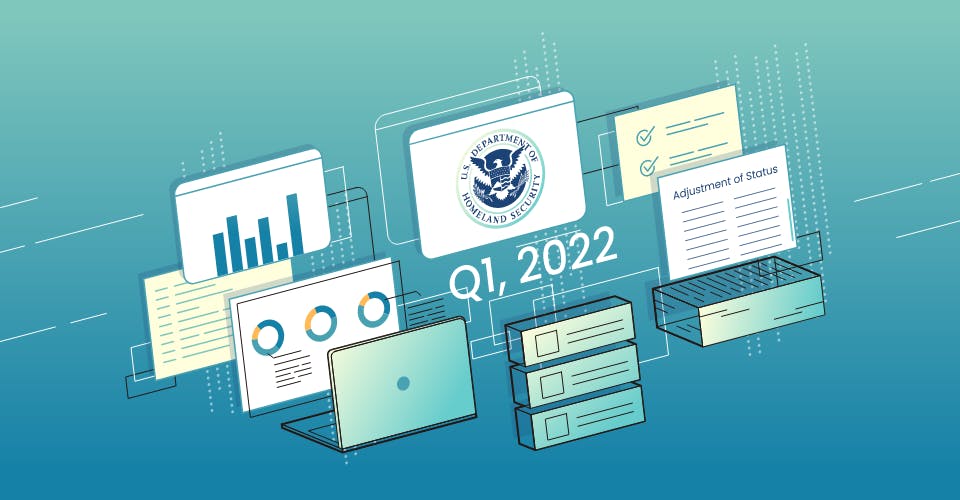As a result of applying for an adjustment of status or filing one's I-485 application, immigrants often become part of the United States workforce. This is because immigrants can put their skills/background/technical knowledge into a variety of different sectors in the United States workforce. Also, when an immigrant is looking to adjust their status and become a Legal Permanent Resident (LPR), the process often takes around a year but an individual can receive their EAD—Employee Authorization Document in just a few months (usually less than 6 months).
Upon receiving an EAD card, and if a visa is past its expiration date, this allows immigrants to work in the United States and also puts less responsibility on behalf of the employer as they do not have to sponsor the applicant in question. Thus, many immigrants enter the U.S. workforce via a work permit, visa, or an eventual adjustment of status which gives them legal status in the country and also time to apply for the jobs they like. Time is of the essence when it comes to job hunting.
As such, the statistics for foreign-born workers as a share of the total U.S. workforce is quite interesting. The rates of working immigrants in the U.S. per their American counterpart varies from state to state, which is largely reflective of the different industries and sectors of employment in each state. The Migration Policy Institute has compiled this data from 1980-2018, as 2019 and 2020 are not available, and have graphically represented immigrants (LPR or visa sponsored).
California
While this brief will not cover every U.S. state, it is important to highlight key U.S. states that have the most economic output, and therefore contribute the most toward annual GDP. In California, for example, in 2000, approximately 30 percent of the labor force was represented by foreign-born workers (Note: “Foreign Born” refers to immigrants who are either LPRs currently, on a working visa, or naturalized citizens). The rate increases to its apex point of 35.3 percent of the civilian workforce in the year 2010. By 2018, the decrease in foreign-born workers as a share of the total civilian workforce levels off at around 33 percent.
New York
The data from New York has a slightly different distribution from the years 1980-2018 and has a steadier slope in the share of foreign-born workers approaching the apex year of 2018. Interestingly, the share of foreign-born workers was 27.4 percent of the total civilian workforce in 2010, but unlike California’s numbers, this rate increased ever so slightly, instead of decreasing, to 27.8 percent in 2018. This could be explained by the fact that more immigrants of LPRs moved states (which is allowed once one has received a green card) from California to elsewhere during the period between 2010-2018.
Vermont
Vermont is an interesting case because instead of a steady slope, this graph is represented by a “V” shape. In the year 1980, foreign-born workers made up 4.2 percent of the civilian workforce. This number, however, dropped to as low as 3 percent in 1990. Then foreign-born workers made a steady increase in the share over the next 20 years, inching back up to 4.3 percent in 2010, and 4.9 percent in 2018.
Florida
Another heavily populated state, Florida has many naturalized citizens of Cuban descent and also many LPRs from Latin America and the Caribbean because of its geographic location in the continental U.S. and because of family reunification in the Greater Miami region. The story in Florida from the period of 1980-2018 shows a long and steady increase of foreign-born workers, but never a decrease during this time period. For example, in the year 1980 foreign-born workers accounted for 11.7 percent of the total civilian workforce, which reached 19.1 percent in 2000, 24.8 percent in 2010, and 26.4 percent in 2018.
Colorado
Colorado shows an overall strong growth of foreign-born workers in the period between 1980-2018. The state has a similar representation of foreign-born workers in comparison to Vermont in 1980, at 6.7 percent of its total civilian workforce. That number increased to 12.4 percent by the year 2000. The steepest rate of increase in Colorado occurred from the period of 2000-2010, which rose 4.1 percent in 10 years. In 2018, 17.2 percent of the civilian workforce was comprised of foreign-born workers.














